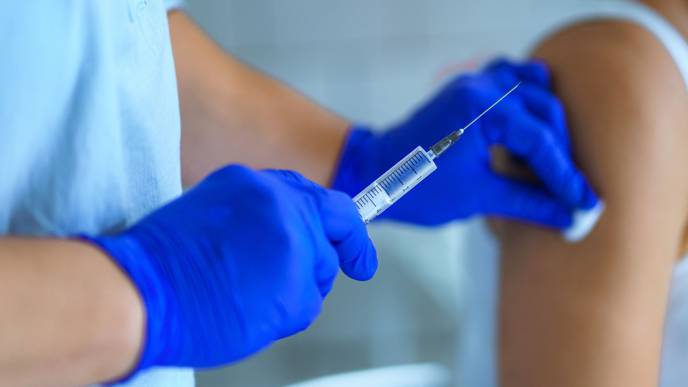Does a High-Dose Influenza Vaccine Reduce Cardiovascular Disease Risk?

09/23/2023
In a recent study published in JAMA Network Open, researchers assessed whether a high-dose influenza vaccine is associated with a benefit in reducing cardiopulmonary (CP) events during periods of influenza activity.
Study: Temporal Association Among Influenza-Like Illness, Cardiovascular Events, and Vaccine Dose in Patients With High-Risk Cardiovascular Disease. Image Credit: BaLL LunLa/Shutterstock.com
Background
Influenza is associated with a higher risk of CP events. Seasonal influenza outbreaks primarily occur in winter when transmission is more favorable. Moreover, cardiovascular (CV) events exhibit similar temporal patterns.
Studies have reported associations between CV events and influenza. Additionally, observational studies and trials suggest that the influenza vaccine might reduce adverse CV outcomes.
INVESTED, a randomized clinical trial, evaluated the effectiveness of the high-dose trivalent influenza vaccine over the standard-dose quadrivalent vaccine in people with high CV risk during the 2016-19 influenza seasons.
It did not find an increased benefit of the high dose relative to the standard regimen for the primary endpoint. It is unknown whether the efficacy of the treatment varies at times of increased influenza-like illness (ILI) activity.
About the study
In the present study, researchers examined whether high-dose influenza vaccine influenced the events associated with ILI activity. This was a pre-specified secondary analysis of the specified trial conducted across Canada and the United States (US) between September 2016 and July 2019.
Patients with high CV disease (CVD) risk previously hospitalized for myocardial infarction (MI) or heart failure (HF) were randomized to receive a standard- or high-dose vaccine for influenza.
ILI was defined by clinic visits for fever, sore throat, or cough without any known cause other than influenza, as reported to the US Centers for Disease Control and Prevention (CDC) outpatient ILI surveillance network.
The team included data from 108 sites and territories. Race or ethnicity was self-reported by patients. The researchers used logistic regression models to compare weekly ILI with the occurrence of the primary and secondary outcomes.
The primary outcome was a composite of CP hospitalization or all-cause mortality. Secondary outcomes included pulmonary hospitalization, CV hospitalization, and death. The temporal association between exposure and development was assessed using weekly ILI activity with up to nine weeks of lag from the outcome.
Models were adjusted for demographics, enrolment strata, state, and CV risk factors. The weekly odds of the (occurrence of the) primary outcome by treatment group (standard- or high-dose) were assessed using logistic regression models.
Sensitivity analyses were performed to examine the associations of ILI activity with outcomes during periods of higher influenza or ILI activity.
Findings
In total, 3,094 US participants aged, on average, 65, were included. Nearly 75% of subjects were males, 72.3% were White, and 22.3% were Black. About 12.1%, 21.7%, and 76% had a prior MI, HF hospitalization, and HF, respectively.
Overall, 1,396 primary outcome events, 183 pulmonary hospitalizations, 1,141 CV hospitalizations, and 322 deaths occurred during 129,285 person-weeks of enrolment.
The highest average ILI activity was recorded during the 2017-18 season. Increased ILI activity in the past week was associated with elevated risks of primary outcome events, CV hospitalization, and CP hospitalization. There was no association of ILI activity with pulmonary hospitalizations or all-cause mortality.
In addition, there was a lower risk of these events during warmer months in the US (July to September). The high-dose influenza vaccine was not superior to the standard dose in its association with the risk of primary outcome events, even when the analysis was restricted to periods of higher influenza or ILI activity.
Conclusions
The findings demonstrated a temporal association of ILI with CV and CP hospitalizations in high CVD-risk patients but not with all-cause mortality.
A higher dose relative to the standard dose of the influenza vaccine did not influence this association, even during periods of higher ILI or influenza activity. Additionally, there was an association between warmer months and decreased CV risk, independent of the local ILI activity.
Although the benefit of vaccination relative to placebo was not determined, vaccination would likely be substantially beneficial to placebo in this high-risk population.
Besides, other respiratory viruses may also contribute to the association since influenza is not the only virus circulating in winter months.
Together, in this secondary analysis of the INVESTED trial, influenza activity was temporally associated with a higher risk of CP events. Yet, the higher vaccine dose did not reduce this risk.

Facebook Comments